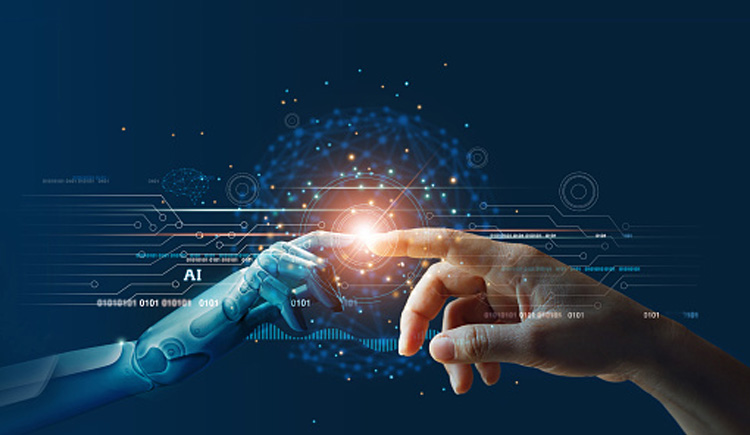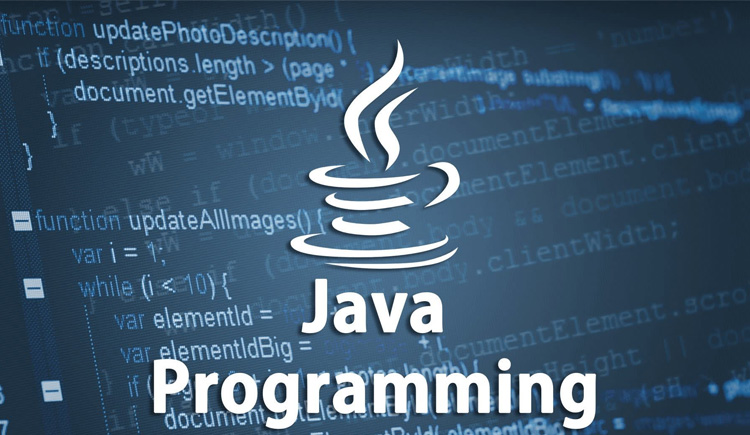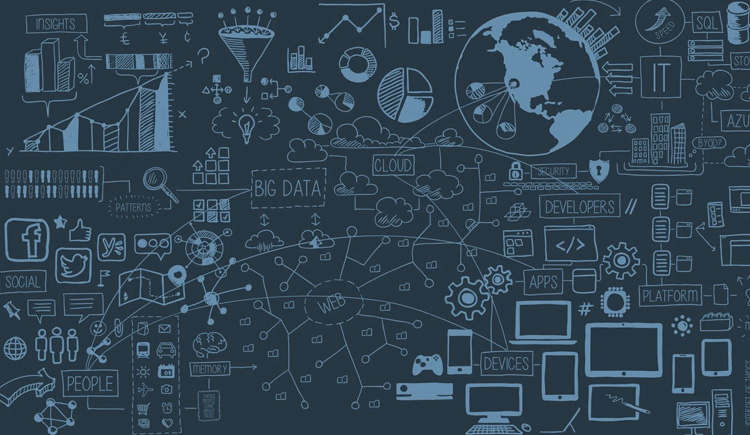
Artificial Intelligence
Artificial intelligence (AI) is a research area that studies how intelligent human behavior can be realized on a computer. The ultimate goal of AI is to develop a computer that can learn, plan, and solve problems on its own. Although AI has been researched for more than half a century, we still cannot build a computer that is as intelligent as a human in all aspects. However, we have many successful applications. In some cases, the computer equipped with AI technology can be even smarter than us.
The main research topics in AI include: problem solving, reasoning, planning, natural language understanding, computer vision, automatic programming, machine learning and so on. These questions are of course closely related. For example, the knowledge acquired through learning can be used for both problem solving and reasoning. Indeed, problem-solving skills should be acquired through independent learning. In addition, problem-solving methods are useful for both reasoning and planning. In addition, both natural language understanding and machine vision can be solved using methods developed in the field of pattern recognition.
In this course we will learn the most basic knowledge needed to understand AI. We will introduce some basic search algorithms for problem solving; Knowledge representation and reasoning; Pattern recognition; fuzzy logic; and neural networks
Course Details
The aim of this course is to provide students with a solid knowledge in the basic concepts of the Internet of Things. The main objective of the course is to get the students to learn and implement real-time IOT applications. The course covers understanding how basic embedded devices and microcontroller and microprocessor chips work.
Discussions about the functionality of various environmental sensors and their interfaces to microcontroller chips are covered. Basic understanding of various communication protocols and communication technologies for implementing IOT applications as well as the general concept of cloud computing and working with the IBM Cloud for device communication with the cloud are included.
Course Information
Unit1: AI System Introduction
Describing the eras of computing
Explaining the difference between deterministic and probabilistic systems
Describing the types of AI
Explaining what the main focus of AI is
Listing oc practical applications of AI
Explaining what cognitive computing is
Describing the characteristics of cognitive systems
Explaining the landscape of cognitive computing in the industry
AI Future trends
Unit2: Introduction to Machine Learning
Explaining what machine learning is
Describing the types of machine learning
Explaining what neural networks are and why they are important in today’s AI’s field
Explaining what domain adaptation is and its applications
Explaining what NLP is
Describing different NLP processes
Listing tools and services for NLP
Identifying NLP use cases
Learn how to build your own language translator with an AI guide.
Defining CV
Knowing the history of CV and its advancement with AI
Listing tools and services for CV
Identifying CV use cases
Analyze, Classify and detect objects using IBM Watson visual recognition service.
Explaining what cognitive computing is
Describing the characteristics of cognitive systems
Explaining the landscape of cognitive computing in the industry.
Classifying images using Node Red Guide
Unit3: Artificial Learning Foundation
Explaining what IBM Watson is and how it works
Explaining how Watson technology is made available to developers and organizations
Describing how Watson technology is being applied to solve real world problems
Recognizing the Watson services available today on the IBM Cloud
Listing the Watson services
Explaining the capabilities of each Watson service
Describing the purpose of training the various Watson services to adapt them to a closed domain
Listing the Watson services that can be trained Artificial Intelligence and Deep Learning
Listing the Watson services that cannot be trained
Describing what Watson Knowledge studio is
Predict Fraud using AutoAI guide.
Working with jupyter notebooks, collaborators using Watson Studio.
Understanding refining of data.
Visualization on refined data.
Listing the Watson services that can be trained with Watson Knowledge Studio.
Creating Machine Learning Model with Knowledge studio
Using Watson API Explorer to interact with the Watson services REST API, to test your call to the API, and to view live responses from the server.
Unit4: Artificial Intelligence Analyst
Describing different NLP processes
Listing tools and services for NLP
Identifying NLP use cases
Describing how to train Watson NLC
Defining the capabilities of Watson Natural Language Understanding (NLU) service and its input and output, along with the discovery service
Explaining the capabilities of the Watson Tone Analyzer service and its input and output
Working with Language translator and its implementation using CURL
Working with Text to speech and speech to text.
Creating a Watson Discovery service instance
Creating a collection
Adding content to a collection
Building queries
Using the Discovery API
Implemented how to gain insights from Airbnb reviews using Discovery service
Unit5: Introduction to Chatbot
Explaining what a chatbot is
Describe common applications of chatbots
Identifying factors that drive the growing popularity of chatbots
Listing examples of tools and services that you can use to create chatbots
what a workspace is
what dialog nodes are
How the nodes in a dialog are triggered
how the dialog flow is processed
The advanced features of a chatbot
Creating a Watson Conversation service instance
Creating a conversation workspace
Developing restaurant host guide using Watson Assistant.
Describing the IBM Watson Visual Recognition service
Listing the features available with Watson Visual Recognition Artificial Intelligence and Deep Learning
Describing the output provided by the Watson Visual Recognition service
Explaining the capabilities of the default classifier
Explaining the difference between a default and a custom classifier
Describing how to train a custom classifier
Creating a Watson Visual Recognition service and obtain the API key value
Using Visual Recognition API methods to:
Classifying images
Detecting faces in an image
Creating and training a custom classifier
Creating an AI virtual assistant guide.
Develop training AI restaurant host guide with Watson Assistant Service
Future Opportunity
Artificial intelligence is a course that will future-proof your career. We all know that over time, people try to get computers to think for themselves. Without this, automated systems cannot work efficiently. Today we enjoyed talking to SIRI. Today we love Amazon's efficiency and fast delivery. We need fact-checking software that can check facts automatically. We have to replace our soldiers with robotic soldiers so that no mother ever loses her son. The uses of artificial intelligence are endless. There are many jobs available for a candidate who opts for an artificial intelligence course. The three main areas that require the expertise of seasoned AI engineers are:
Machine Learning Engineering: Although we think that machines with artificial intelligence think autonomously, we have to feed the system with huge amounts of data in order to create the logic-based system in the AI. We can't just feed in unstructured data. The AI machines require a huge, logical, and huge amount of data for their algorithm to work properly. This is the job of machine learning engineers. Think of machine learning engineers as teachers teaching students basic ethics and logic. The student then uses the teachings of the teachers to develop their own understanding of the world. The work of ML engineers is extremely critical. You are not allowed to enter any data that could affect the AI.
Data Science: Similar to machine learning engineers, data scientists analyze big data to understand how it can be fed into the AI system in order to make the AI more efficient. Data scientists are perhaps the most important people in the AI world - they need to know both AI and ML to make good use of big data.
Artificial Intelligence: If machine learning engineers are the teachers, artificial intelligence engineers are the parents who teach the AI system how to work with the data it feeds. They build the neural network - the brain of the AI system. Building a neural network is a work of art - it takes patience and strong logical skills.
Tutor Information
- Artificial Intelligence (AI)
- Machine Learning
- Thinking Skills
- Ethical Awareness
- Design Thinking
Industry Driven projects
1. Voice-based Virtual Assistant for Windows
This is one of the interesting artificial intelligence project ideas. Voice-based personal assistants are handy tools that make everyday tasks easier. With virtual voice assistants you can, for example, search for articles / services on the web, shop for products for yourself, take notes and set reminders and much more.
2. Personality prediction system via resume analysis
This is one of the interesting artificial intelligence project ideas. Shortlisting deserving candidates from a huge pile of résumés is a daunting task. What if there is software that can interpret a candidate's personality by analyzing their résumé? This makes the selection process much more manageable. This project aims to develop advanced software that can provide a legally justified and fair CV ranking system.
The system works something like this - candidates register in the system by entering all relevant data and uploading their résumé. They also take an online test that focuses on personality traits and the candidate's suitability. Candidates can also view their test results.
3. Customer recommendation
E-commerce has benefited dramatically from AI. The best example is Amazon and its customer recommendation system. This customer referral system has helped the platform increase sales tremendously thanks to a better customer experience. You can also try building a customer referral system for an e-commerce platform. You can use the customer's browsing history for your data.
4. Chatbots
One of the best AI-based projects is creating a chatbot. You should start by creating a simple customer service chatbot. You can get inspiration from the chatbots on various websites. Once you've created a simple chatbot, you can improve it and make a more detailed version of it. You can then switch the chatbot's niche and expand its capabilities. There are plenty of new chatbots that you can create with AI.
5. Language based virtual assistant for Windows
This is one of the interesting artificial intelligence project ideas. Voice-based personal assistants are handy tools that make everyday tasks easier. With virtual voice assistants you can, for example, search for articles / services on the web, shop for products for yourself, take notes and set reminders and much more.








